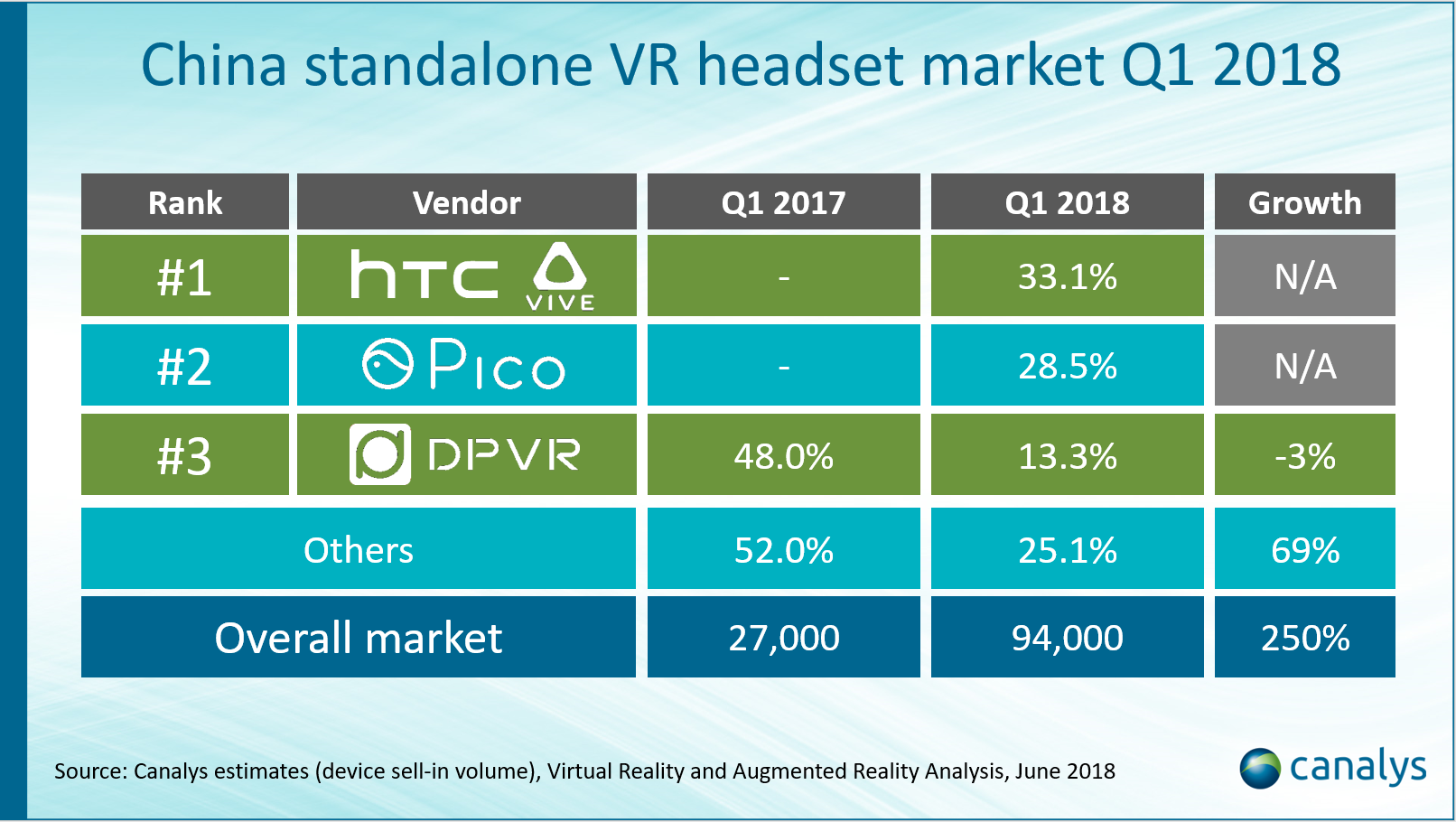Palo Alto, Shanghai, Singapore and Reading (UK) – Tuesday, June 6 2018
The worldwide VR headset market grew 16% in Q1 2018 as shipments reached a total of 650,000 units. This increase was largely driven by the fast-growing standalone VR headset segment, which helped China grew 200% while other major countries, such as the US and Japan, declined. Thanks to active participation from local vendors, China now dominates the standalone VR headset market, accounting for 82% of global shipments.
In terms of overall VR headset shipments, the US remains the largest market, with a 31% share, though China is closing the gap at 28%. “The Oculus Go began shipping in May 2018 and early market reaction has been positive for the US$200 standalone device,” said Canalys Research Analyst Vincent Thielke. “With HTC and other vendors eager to launch worldwide, the standalone VR headset market in the US will catch up quickly.”
Standalone VR headsets accounted for 51% of the VR market in China, with 94,000 units shipped in Q1 2018. HTC topped the standalone segment with a 33% share, followed by Pico and DPVR.

Backed by its strong Vive brand, HTC shipped 31,000 of its Vive Focus standalone VR headsets in China. “The Vive Focus’s 6-DoF tracking allows for enhanced use cases for vertical integrations. Recent collaborations with the MLB (Major League Baseball) and McLaren bode well for HTC, which is looking to attract high-profile business customers,” said Canalys Senior Analyst Jason Low. HTC made a smart move to use the release of the “Ready Player One” movie, which hit theaters in China in late March, to raise consumer interest in VR. “HTC must now deliver content that matches the experience shown in the movie to get people to buy before their interest wanes.”
Pico trailed closely behind HTC, shipping 27,000 standalone headsets in China in Q1 2018. “Thanks to its lower price, the Pico Goblin headset proved popular among consumers as well as business users with less demanding requirements,” said Low. For more advanced features, Pico offers the Neo CV with 6-DoF tracking for both headset and controllers. “While the industry had agreed on the importance of 6-DoF tracking for VR, content is fragmented and still lagging behind. Vendors that are committed to lead the development of compelling content and services will further lead the market with capabilities others cannot easily match.”
The standalone headset segment is expected to grow rapidly in 2018, driven by new device launches from Oculus and Lenovo, which are launching globally, as well as Xiaomi, DPVR, iQiyi and others, which are launching in China first. “While VR vendors are making it easier for consumers to adopt the technology, the next challenge is to focus on providing wider use cases to stimulate consumer demand. Many vendors will be fighting for survival or rushing to get acquired if they can’t expand VR beyond the gaming sector,” added Low.
VR headset quarterly estimate and forecast data is taken from Canalys’ Virtual Reality and Augmented Reality Analysis service.
Email Newsletters
Sign up to receive TelecomTV's top news and videos, plus exclusive subscriber-only content direct to your inbox.




